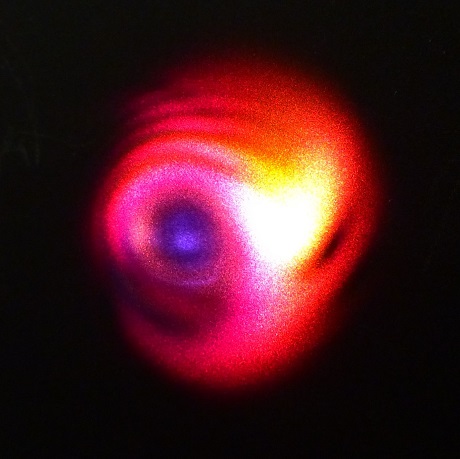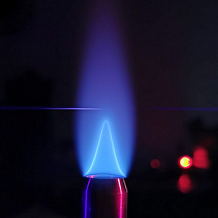
Raman Instrument Advances Study of Greener Fuels for Aerospace
There is much interest in developing aerospace engines that run on renewable, hydrogen (H2-rich) fuels. In addition to providing sustainability, these fuels exhibit a high specific impulse (i.e., the measure of how efficiently the chemical reaction in the engine creates thrust). A significant amount of research is being conducted in the development of technologies enabling H2-based, carbon-neutral combustion.
To boost research into H2 that could lead to more environmentally friendly rocket fuels, researchers from Luleå University of Technology, Delft University of Technology, and Vrije Universiteit Amsterdam developed an instrument that performs coherent Raman spectroscopy (CRS), using an ultrafast laser, to obtain precise temperature and concentration measurements of H2. The team’s approach could help advance the study of greener hydrogen-based fuels for use in spacecraft and airplanes.
The development of reliable, H2-based chemical propulsion systems is a challenge. One reason is that the increased reactivity of H2-rich fuel alters the fuel mixture combustion properties, causing the flame temperature to increase and ignition delay times to decrease.
In addition, combustion in rocket engines is difficult to control because of the extremely high pressures and high temperatures encountered when traveling to space.
“The advancement of technology for sustainable launch and aerospace propulsion systems relies on a coherent interplay between experiments and modeling,” said research team leader Alexis Bohlin. “However, several challenges still exist in terms of producing reliable, quantitative data for validating the models.”
To help meet this challenge, the researchers created a setup that converted broadband light from a femtosecond pulsed laser into short, supercontinuum pulses. They generated the supercontinuum pulses behind the same type of thick optical window found on the high-pressure chambers used to study H2-based engines.
Experiments on H2-based systems in an enclosed space typically have limited transmission of optical signals in and out through optical windows. The windows can cause the supercontinuum pulses used in CRS to become stretched as they pass through the glass.

The researchers developed a way to transmit a femtosecond pulsed laser through a thick optical window and then used a process called laser-induced filamentation to expand it into a supercontinuum pulse that remains coherent. The image shows the range wavelengths in the expanded pulse. Courtesy of Alexis Bohlin/Luleå University of Technology.
The researchers overcame this issue by transmitting a femtosecond pulsed laser through a thick optical window and then using laser-induced filamentation to transform the femtosecond pulses into supercontinuum pulses that remained coherent, even on the other side of the glass.
To demonstrate the instrument’s capabilities, the researchers set up a femtosecond laser beam with properties optimal for the generation of supercontinuum pulses. They performed CRS by exciting H2 molecules and measuring their rotational transitions. The researchers demonstrated robust measurements of H2 gas over a wide range of temperatures and concentrations and analyzed a H2/air diffusion flame that was similar to the flame that appears when a H2-rich fuel is burned.
According to the researchers, their work represents the first demonstration of in situ, femtosecond laser-induced filamentation used to generate a compressed supercontinuum pulse behind a thick optical window, and the in situ use of supercontinuum pulses to perform femtosecond/picosecond CRS on molecular H2.

The researchers developed a Raman-based analytical instrument that uses an ultrafast laser for precise temperature and concentration measurements of hydrogen. They used it to study the hydrogen flame, shown here. The research supports further research into greener, more sustainable fuels for use in spacecraft and airplanes. Courtesy of Alexis Bohlin/Luleå University of Technology.
“This instrument will provide powerful capabilities to probe dynamical processes such as diffusion, mixing, energy transfer, and chemical reactions,” Bohlin said. “Understanding these processes is fundamental to developing more environmentally friendly propulsion engines.”
The team is currently using the instrument to analyze a turbulent H2 flame. The researchers’ goal is to use the instrument for research and testing of rocket engines. They are exploring the limitations of the technique and hope to test it with H2 flames in an enclosed, slightly pressurized housing.
“Hydrogen-rich fuel, when made from renewable resources, could have a huge impact on reducing emissions and make a significant contribution to alleviating anthropogenic climate change,” Bohlin said. “Our new method could be used to study these fuels under conditions that closely resemble those in rocket and aerospace engines.”
The research was published in Optics Express (www.doi.org/10.1364/OE.465817).
Published: September 2022